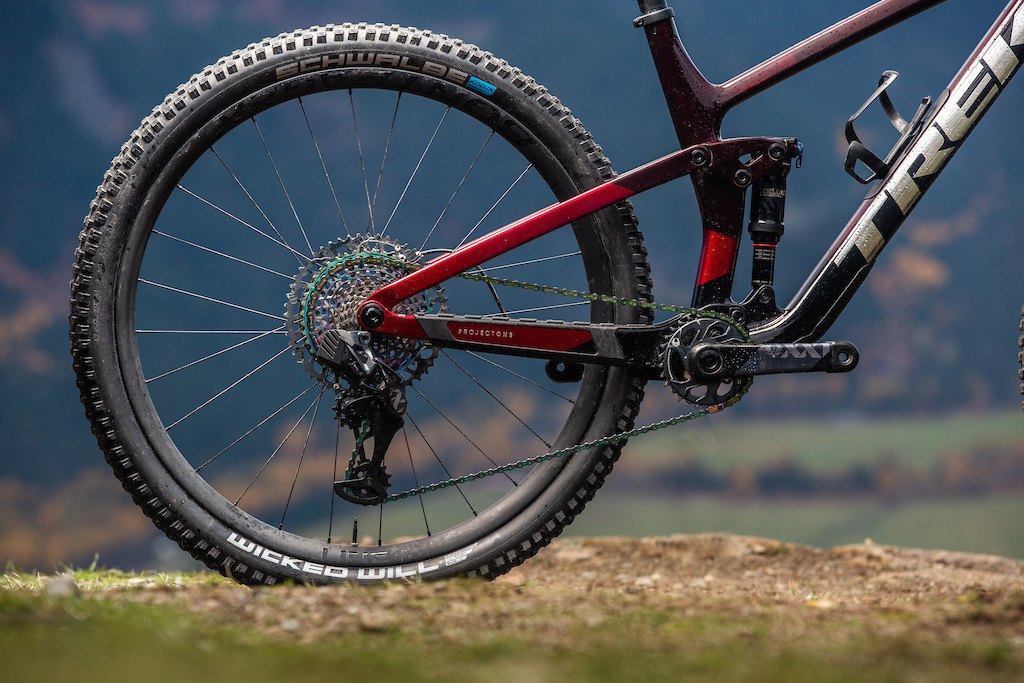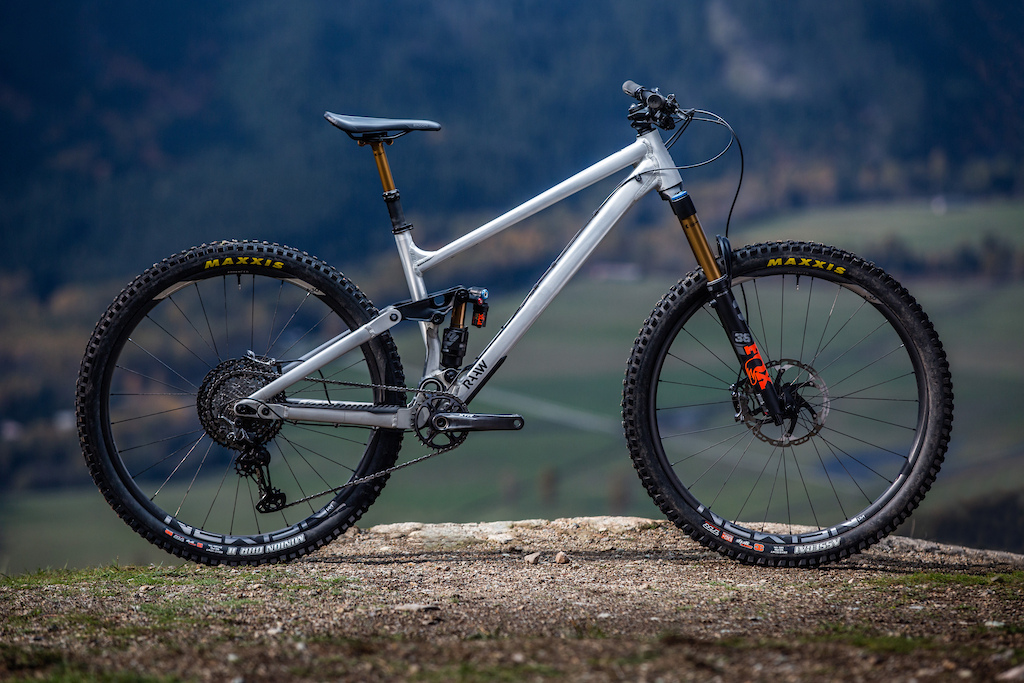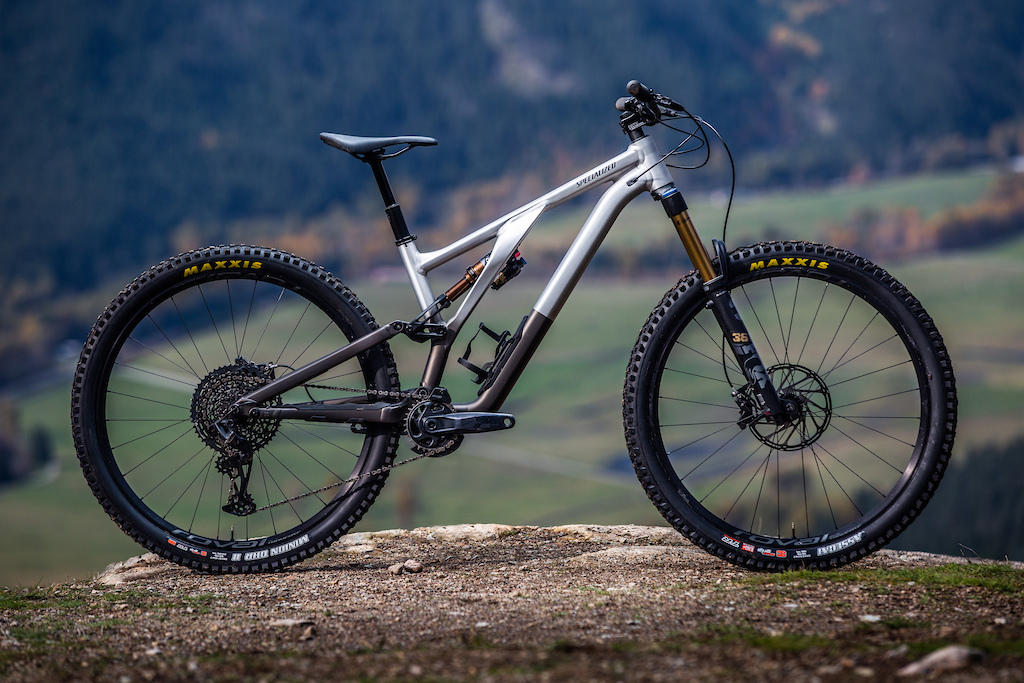Field Test: 12 Trail & Downcountry Bikes Face the Efficiency Test
PINKBIKE FIELD TEST
12 Downcountry and Trail Bikes Face the Efficiency Test
Gravel Riding For Science
12 Downcountry and Trail Bikes Face the Efficiency Test
Gravel Riding For Science
Through this field test, we've talked about any number of exciting new concepts. Whether it's downcountry or the famed aggressive-variable-trail-enduro bikes, it's all got a bit exciting. What about, however, something boring and old-fashioned such as efficiency? How much your shock bobs about might not be the top of your concerns, but then again you probably don't care about 120mm bikes that are unaccountably not called trail bikes either, yet here we are.

The Efficiency Test went up gravel road and isn't totally representative of how a bike rides on chunky technical climbs.
To do it, we measured a 750-meter course up a gravel road climb, then placed timing cones at the start and finish points. A set of Garmin Vector power pedals talked to a 1030 head unit, and we set it up to display normalized, 10-second, and 3-second power numbers; the idea is to have each bike finish the climb with the same normalized, 250-watt power number. This means that at the same power output the more efficient bikes should take less time to complete the course.
The climb is relatively short and, as fire roads go, it wasn't particularly rough. That's not to say it was as smooth as glass, but it was more about seated easy climbing than out of the saddle grunts and bumps.
This is a different climb from any that we've used before so it doesn't hold many comparisons outside of this year's group. However, within that context, it's very telling. It's also worth noting that mechanical efficiency is easy to measure via a power meter. Metabolic efficiency is not only far harder to compare but is also, rather staggeringly, even less interesting.
Efficiency Test Results
Downcountry Bikes
1st Trek Top Fuel - 2:37
2nd Rocky Mountain Element - 2:38
3rd Santa Cruz Blur TR - 2:41
4th Canyon Lux Trail - 2.42
5th Niner Jet - 2:43
5th Giant Trance 29 Advanced (climb mode setting on Live Valve) - 2:43
7th Giant Trance (open mode setting on Live Valve) - 2:45
1st Trek Top Fuel - 2:37
2nd Rocky Mountain Element - 2:38
3rd Santa Cruz Blur TR - 2:41
4th Canyon Lux Trail - 2.42
5th Niner Jet - 2:43
5th Giant Trance 29 Advanced (climb mode setting on Live Valve) - 2:43
7th Giant Trance (open mode setting on Live Valve) - 2:45
Trail Bikes
1st Specialized Stumpjumper Evo - 3:10
1st Raaw Jibb - 3:10
3rd Scor 4060 ST - 3:11
4th Starling Murmur - 3:13
5th Propain Hugene - 3:14
6th Ghost Riot - 3:17
1st Specialized Stumpjumper Evo - 3:10
1st Raaw Jibb - 3:10
3rd Scor 4060 ST - 3:11
4th Starling Murmur - 3:13
5th Propain Hugene - 3:14
6th Ghost Riot - 3:17
What'd we learn after way too many trips up the gravel road?
Not surprisingly, the downcountry bikes were faster, even if the size of the gap did surprise me. The grippy, thicker casing tires no doubt played their part in that. Within each category the gaps were seconds... but when you change tires the results become drastically different. The fastest trail bikes were also metal. Weird. It's almost as if frame material and suspension travel are only two pieces in a larger puzzle, but that can't be it.

Trek's suspension system comes on everything from their 120mm Top Fuel to their long-travel bikes. It's clearly adaptable though as the Top Fuel topped out testing.
The Jibb and Stumpjumper Evo shared top honours for the trail bikes. Both aluminium, yet faster than everything else.
Let's be real though - our efficiency test is a good indication of a bike but it's not the be all and end all, and it isn't always representative of how fast a bike will be on singletrack. It's interesting but it's not a peer-reviewed science experiment.
The 2021 Fall Field Test is presented by Rapha and Bontrager. Thank you also to Maxxis, Schwalbe, and Garmin for control tires and equipment.
Author Info:
Must Read This Week
Sign Up for the Pinkbike Newsletter - All the Biggest, Most Interesting Stories in your Inbox
PB Newsletter Signup



 Member since Jun 3, 2014
Member since Jun 3, 2014
I would bet a DH bike with long post and super light wheels, XC tyres is more "efficient" than a WC race XC bike with DH rims, inserts and DH tyres on.
Sorry to be picky, but that’s a useless generalisation if you’re not adding compound and casing to the tread pattern.
Assegai in Exo+/3C maxterra is a very fast rolling option in my book
Bike weight of 4 pounds difference doesn’t matter much when you add in the 150lb+ rider.
Reminder, this test was only a couple minutes long. A light breeze or the difference in qc from one tire to the next would have a larger effect.
Also, you are really arguing that 4lbs doesn't make a difference? Yeah sure. With that logic, all XC racers should not be shaving bike weight and all could riding 30lb trail bikes with same results. Lol.
True, on a short test that like, small difference in some metrics can change the results, however that doesn't mean that weight is insignificant. Still on short climb like that, you can tell the difference in weight on those bikes when riding them. I'm amused at the fierce backlash that weight doesn't matter on bikes. Lol.
The suspension kinematics on XC hardtails must be some secret next level technology since they are winning so many UCI XCO races. For the life of me, I can't figure out how the suspension kinematics on hardtails work.
It is a good sample size and timeframe because the pandemic last couple of years.
www.singletracks.com/mtb-gear/the-winningest-world-cup-xc-mountain-bikes-over-the-past-3-seasons
My guess is that the tires make the bike at least 15% more efficient. that could mean that a second Wheelset with light tires is porbalby a better investment than a second bike.
What do you guys think?
My 15kg Enduro bike is as fast uphill as my 12kg hard tail with the same tires & wheels combo. 20mm more travel and a more relaxed geo don’t slow a bike down on a fireroad climb.
For me to believe in this data you need to have more results. Lets say 10 runs with each bike to remove any noise from the time measurement.
Also....they prefaced the whole thing by saying it was a fun test to see if things stood out and it wasn't the end all and certainly wasn't done to the level of a peer reviewed test.
I can go into further depth if needed, but if you used normalized power, you can’t say that they were identical efforts as far as power output is concerned. Average power, yes; normalized power, no.
Would be interesting to see which bikes were on which end of that 247-252. Some of the times were close enough that that swing could have changed results.
I think the same principle applies to suspension kinematics. It still takes energy from your pedal stroke to extend and stiffen the pedaling platform. On the propane this makes the pedaling platform feel super stiff and efficient but it still takes energy that would otherwise be going to the rear wheel and applies it to extending the rear suspension.
Any talk about felt rolling resistance is basically worthless.
@Ttimer: very wrong...get ya mind right
Having said all of that, I would really like to try an Element for myself :-)
I recon you would lose more than 30 seconds on this test just by riding the bike with a dirty chain?
I admire all the effort you guys put into these field tests, but I have to mention that the efficiency test setup is inherently wrong.
Let me try to explain.
You are measuring the power on the pedals, which means after the rider has already overcome suspension inefficiency. Imagine if there would be a spring between a shoe and a pedal. The rider would have to compress the spring first and then apply force to the pedals, which means in order to produce, let's say, 250w on the pedals, the rider would have to push harder than in the case spring is not there.
I just want to give one more example here. Imagine you are trying to measure whether the seat height affects the efficiency. In the first batch of runs, the set is at the appropriate height, while in the second batch of tests the seat is lowered by 20 cm. In both cases, you are trying to maintain 250w at the pedals. The times would be very close, maybe even identical, but the rider's effort would be very different.
This explains why a lot of lockout tests (the one published on PB included) show marginal benefits of using lockout.
The time differences seen in this test are very small and since only one run for each of the bikes has been done, they are not statistically significant. The majority of them could probably be attributed to errors in measuring, line choices, weight, state of the drivetrain, etc.
More details could be found in this video youtu.be/zGO2pu0JX_8 done by Peak Torque.
I apologize if I sound rude or arrogant, that is not my intent. I am not a native English speaker, so my words might sound differently than I wanted.
-NOPE ...if a spring compresses and then expands back to it's original position (no damping), the work done equals zero. It would just feel different, but real work done is the same.
"Imagine you are trying to measure whether the seat height affects the efficiency. In the first batch of runs, the set is at the appropriate height, while in the second batch of tests the seat is lowered by 20 cm. In both cases, you are trying to maintain 250w at the pedals. The times would be very close, maybe even identical, but the rider's effort would be very different."
-NOPE ...rider work done would be the same. What you are comparing by this is the effect of bike setup on biomechanmical efficiency. I assume that for the test, all the bikes had very similar bike geometry setups. This point would be true if the bikes had very different geometry that would affect biomechanics. For instance: one would have very long cranks and the other one short, or very low long stem vs short high etc. I don't think that is the case.
Either way, it doesn't really change the way I feel about the efficiency test. It's a fun test to do but take it with a pinch of salt. Cheers
Or it’s a financial choice. Whether that’s in the frame construction or components.
That conclusion is that we need Pinkbike to do tire efficiency tests. @henryquinny, @seb-stott are you listening?
Then welding would be needed, but that's the easier part of the equation from the investment point of view. TIg welding machines, heat treatment ovens, allignment rigs are cheaper than drawing /hydorforming equipment and most likely are actually readily availbale even if not specifically dedicated to bicycle frames.
I seem to remember Spook made aluminium frames in USA and had bought the old Cannondale equipment?
Cannot agree more here, but the results of such test might ruin some marketing trends)
m.pinkbike.com/news/video-meta-power-29-vs-160e-vs-range-vlt-vs-kenevo-sl-field-test-roundtable.html
PB field test: New Toyota Tundra TRD
The timing tests that are often thrown around show things to not be that far off. The video from Steve Peat running his 26" against his 29" showed a 2% difference on the downs.
I'd really just like some rigorous testing put together but I have a hunch that no bike company benefits from that and as such won't get the support that it would need.
Why do you think 27.5s are most efficient? If you want to say that 27.5s are more fun, I won't argue there. Fun is the most important thing when you're not a a pro racer.
I assumed racers ran sponser parts to be honest. Which is why i thought they typically are on what makers are trying to sell at the moment. Can sponser riders run what ever they want?
Do you think 29s are most effecient? Do you mind linking to that data?
Articles I've seen are usually just some random runs down a hill and they proclaim 29s are faster. Like the Steve Peat showing a 2% change from 26 to 29. But seems like a lot of weight to drag around. Any math on the subject is usually hand waved and from a company wanting to sell things based on that "math".